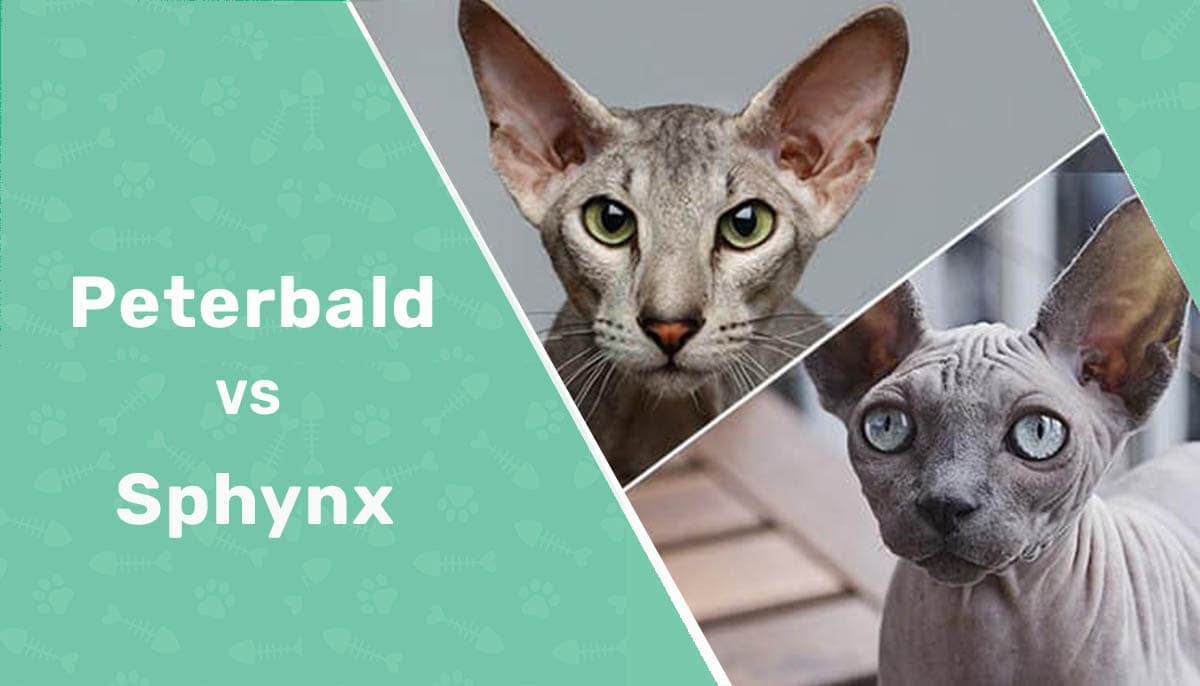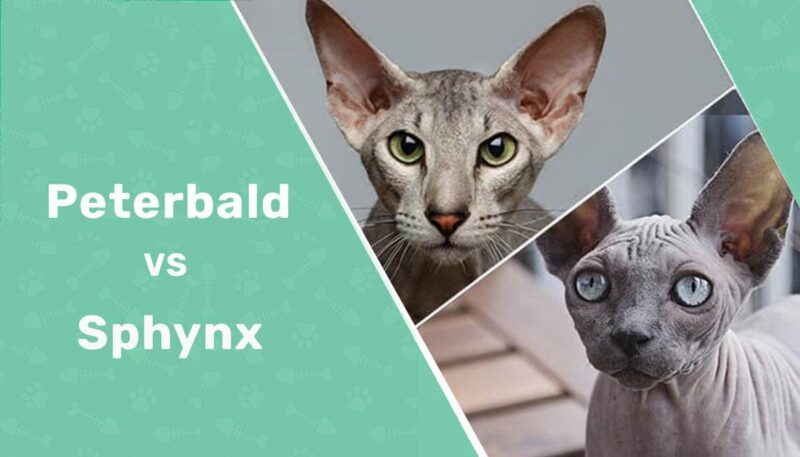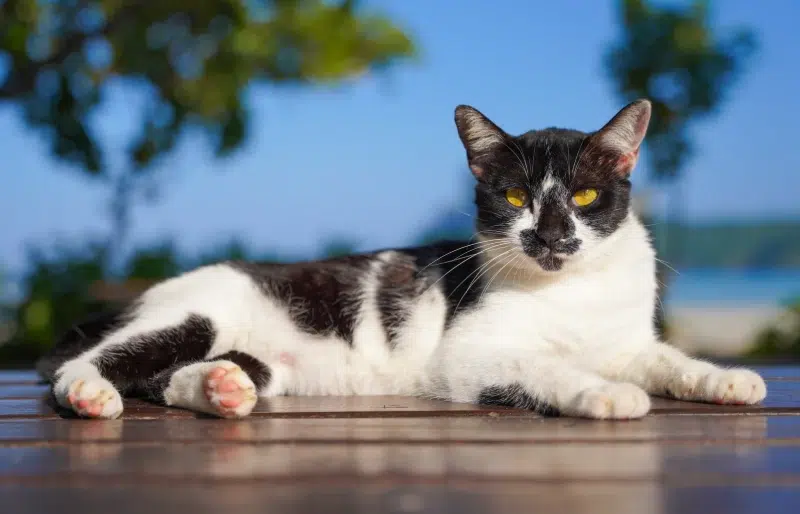Click to Skip Ahead
Peterbald and Sphynx cats look similar, but they are different breeds with unique origins. While they are practically hairless, the Peterbald’s head is a little longer, and experts describe them as having a mustache. They also have whiskers, while the Sphynx will have only partial or no whiskers.
While the Peterbald looks hairless, they have a light coat available in five variations based on a dominant gene, while the Sphynx has no hair due to a recessive gene. Peterbald cats also tend to be healthier than their Sphynx counterparts.
Visual Differences
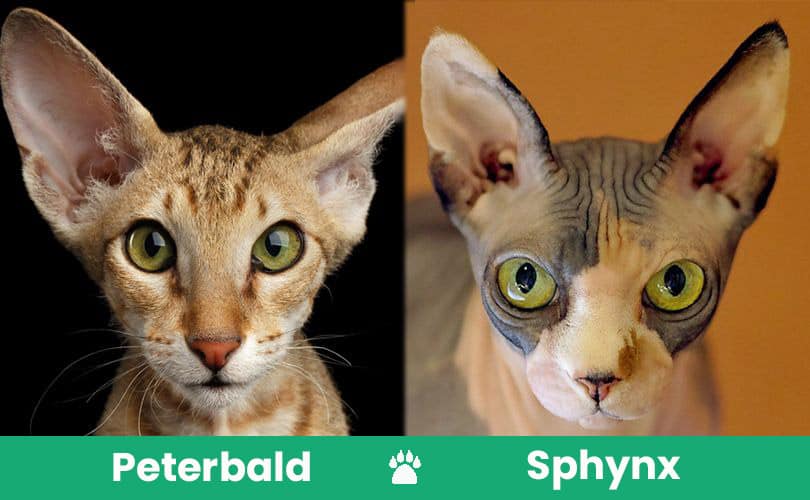
At a Glance
- Average height (adult): 8 – 10 inches
- Average weight (adult): 7 – 14 pounds
- Lifespan: 12 – 15 years
- Exercise: 30 minutes a day
- Grooming needs: Moderate
- Family-friendly: Yes
- Other pet-friendly: Often
- Trainability: Intelligent, but requires patience
- Average height (adult): 8 – 10 inches
- Average weight (adult): 6 – 12 pounds
- Lifespan: 8 – 14 years
- Exercise: 30 – 45 minutes a day
- Grooming needs: Moderate
- Family-friendly: Yes
- Other pet-friendly: Often
- Trainability: Intelligent and responds well to positive reinforcement
Peterbald Overview
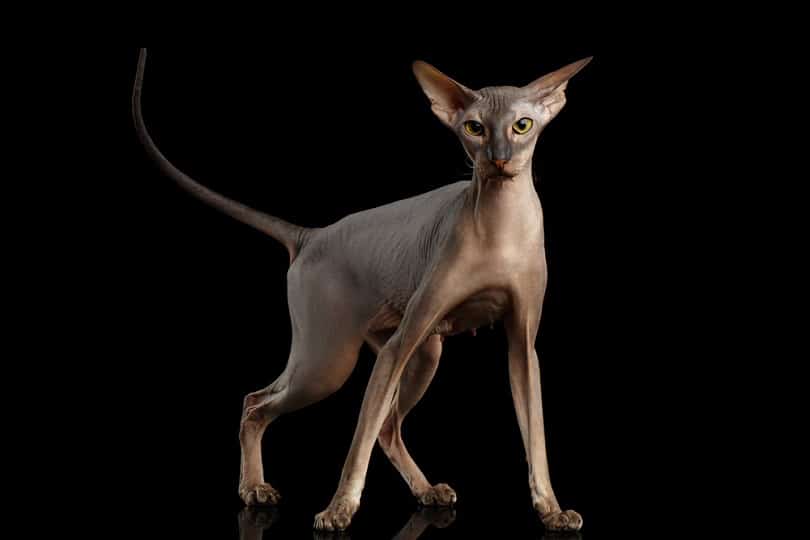
The Peterbald is a Russian breed named after St. Petersburg, where they originate. They were developed in the 1980s and is a mix of the Don Sphynx and the Oriental Shorthair. They have a thin but muscular build, almond eyes, a wedge-shaped muzzle, large ears, and a long, thin tail they will use to grab objects. The coat can change over the first few years, causing them to gain or lose hair. It was accepted in 2009 by the American Cat Fanciers Association for champion class competition.
Appearance
- Bald – This coat is the most common coat of the Sphynx. There is no hair on the body and no whiskers or eyebrows.
- Flock – This is a 90% hairless cat with skin that resembles leather with whiskers and eyebrows.
- Velour – This a 70% hairless cat with whiskers, eyebrows, and a thin coat that can reach 1 mm in length and resembles peach fuzz.
- Brush – Brush is a unique coat resembling felt that can be up to 5 mm long. The whiskers and eyebrows are also present.
- Straight – This coat resembles a shorthair cat with no noticeable hair loss.
Grooming and Care
You will need to brush your cat’s teeth with cat-safe toothpaste, trim the nails if they start to shred the furniture, and bathe them every week or two to remove the oils that build up. These oils can cause an unpleasant odor, and they make the skin sticky, which will attract and hold dirt. You must also monitor the temperature since Peterbald cats get cold quickly.
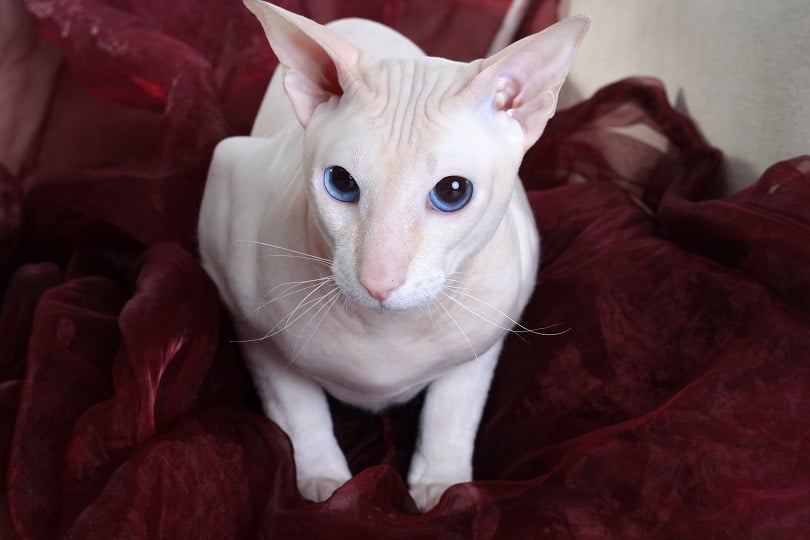
Health and Care
Unlike most cat breeds, the Peterbald has no known predisposition to health problems. As with any cat, tooth decay and obesity are significant concerns, but there is no higher risk of cancer, hip dysplasia, or other genetically transmitted health problems.
Suitable for:
The Peterbald makes a great family pet or companion for a single owner. They are a vocal breed and like to follow family members around. If they get chilly, they will sit on your lap and try to snuggle up, and they enjoy the company of other cats and dogs and will snuggle up to them as well.
- See Also: How Much Does a Peterbald Cat Cost?
Sphynx Overview
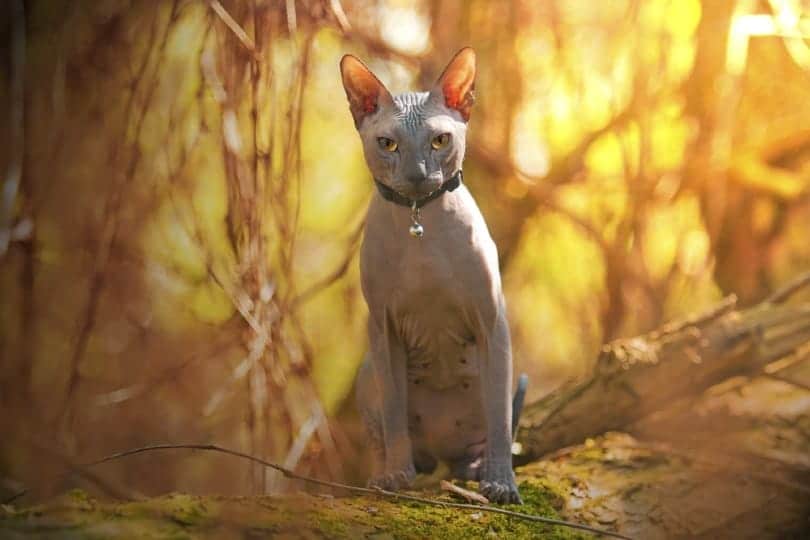
Despite their name, the Sphynx has nothing to do with Egypt and is a Candian/American cat based on two sets of hairless cats found in the 1960s and 1970s. The current American and European Sphynx breeds are descendants of two cats named Dermis and Epidermis from Minnesota and three stray cats named Bambi, Punkie, and Paloma from Ontario, Canada.
The Sphynx is an extroverted breed that enjoys being around people. Many owners describe them as having doglike characteristics because they like to follow you around and run to the door when you get home.
Appearance
The bald, wrinkly, and barrel-chested Sphynx has an unusual body shape. The muscular cat can have a smooth coat or a soft covering of downy fur.
The Sphynx comes in a wide variety of colors and patterns, including black, red, white, chocolate, lavender, tabby, tortoiseshell, calico, bicolor, and pointed and mink patterns. Because the skin pigment is skin-deep, light conditions can make it tough to distinguish their true color.
Grooming and Care
The Sphynx cat has no hair at all and lacks whiskers. Because there is no hair, the oils stay on the body, making the cat sticky to the touch. These oils attract and hold dirt, which will rub off on your furniture and floors. If left on too long, the cat can begin to smell bad.
Experts recommend bathing your Sphynx weekly to remove the oils. Hairless cats seem to enjoy the warm water much more than other cats, and they get used to it quickly if you are vigilant with weekly baths.
The Sphynx will get cold quickly, and many people put them in clothes to help keep them warm. They will often stay near a heater or furnace during the cold season. You must also trim the nails occasionally and brush their teeth with cat-safe toothpaste.
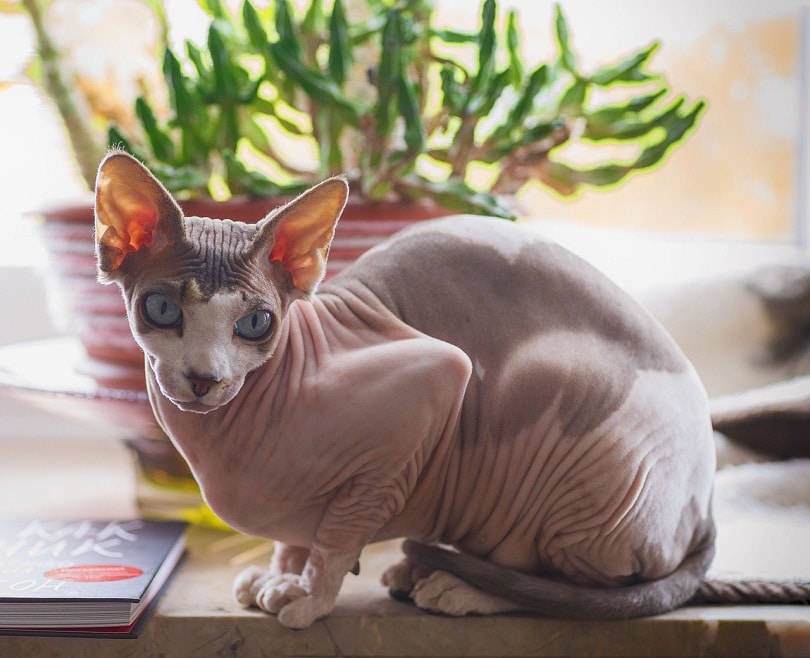
Health Concerns
- Skin Cancer
Unfortunately, the Sphynx suffers from several health issues and is especially prone to skin cancer due to their lack of fur. It’s essential to keep them out of direct sunlight, including windows your cat may enjoy sitting in. Clothing can help when sunlight is unavoidable.
- Hypertrophic Cardiomyopathy
Hypertrophic Cardiomyopathy is a type of heart disease that affects cats. It causes the heart’s muscular walls to thicken, decreasing efficiency. It could lead to congestive heart failure and is prevalent in many breeds, including the Sphynx and the Maine Coon.
- Congenital Myasthenic Syndrome
Congenital Myasthenic Syndrome is a condition prevalent in the Sphynx that causes the muscles to weaken. It usually starts early in life, and one of the first signs is head-bobbing because the disease makes the muscles too weak to hold the head steady. Your cat may also become tired easily and have a high stepping gate.
Suitable for:
The Sphynx cat is suitable for families living in a warm climate who have a lot of attention to give. Their search for warmth will cause them to spend a lot of time on your lap or burrowed under the blankets in your bed.
It can also put them in situations where they get burned if they get too close to a heater, so it’s important never to leave them unsupervised when heaters are running. However, they’re an energetic breed that loves to play games and is very affectionate.

Which Breed is Right for You?
Which breed is right for you will depend somewhat on your commitment to supervising your pet. The Sphynx will need near-constant supervision and attention. It’s better suited to large families where someone is always home. You must also prevent sunlight from burning their skin.
The Peterbald is a much healthier cat, and if you get any coat besides the bald, you can allow minimal amounts of sunlight into your home. They are more independent and less likely to injure themselves. Peterbalds will still come to you for warmth and will spend a significant amount of time on your lap.
They’re a vocal breed that will call you from another room. If you are a first-time cat owner, we recommend the Peterbald over the Sphynx. We hope you have enjoyed comparing these two strange and unique breeds and have found the answers to your questions. If we have helped you choose one for your home, please share this shootout between the Peterbald and the Sphynx on Facebook and Twitter.
Featured Image Credit: CNuisin, Shutterstock

